In the days of horse-drawn carriages, you couldn’t dream of the power-to-weight ratios you’ll find in today’s affordable cars. You’re in for a treat if you’re hunting for a ride that offers more vroom per gram without requiring a treasure chest.
Affordable cars with impressive power-to-weight ratios blend performance thrills with a price tag that won’t have you eating ramen for months. These vehicles, like the nimble Mazda MX-5 RF and the punchy Kia Cerato GT, give you the zip you crave. They’re engineered to leverage every horsepower efficiently, ensuring you get the most bang for your buck.
Whether it’s darting through city streets or cruising on the highway, you’ll find joy in the sweet spot between acceleration and affordability.
Contents
Some Takeaways
- Quicker acceleration and nimbler handling can be achieved with a high power-to-weight ratio.
- Muscle cars with heavy weight may not have the best power-to-weight ratio.
- Lighter cars with moderate power can outperform heavier models.
- The key criteria for selecting affordable cars with the best power-to-weight ratio include power-to-weight ratio, price per horsepower, and overall value.
Understanding Power-to-Weight
You’ll experience quicker acceleration and nimbler handling from a car with a high power-to-weight ratio, as this figure is a direct indicator of how swiftly a vehicle can move relative to its mass.
For car enthusiasts eyeing a performance car without breaking the bank, understanding this ratio is key. Muscle cars, for instance, may boast an engine producing 363 horsepower, but if the vehicle is heavy, the best power-to-weight ratio may still elude it. Conversely, lighter cars with moderate power can outperform heftier models.
It’s this balance that makes models like the Toyota GR Yaris or the Nissan 370Z stand out in their categories, offering the thrill of high performance that’s still accessible to those on a tighter budget.
Criteria for Selection
In evaluating your options for an affordable car with a superior power-to-weight ratio, consideration must also be given to factors like reliability, fuel efficiency, and maintenance costs. You’re not just looking for the best performance; you’re seeking an affordable performance that won’t break the bank in the long run.
Performance Cars Criteria
Power-to-Weight Ratio: The core metric for performance, ensuring you get the most go for your vehicle’s weight.
- Mazda MX-5 RF
- Toyota GR Yaris
Price per Horsepower: This gives you a clear idea of the performance bargain you’re getting.
- Kia Cerato GT
- Nissan 370Z
Overall Value: Balancing power, efficiency, and cost, highlighting cars that deliver without demanding too much.
Mazda MX-5 RF Overview
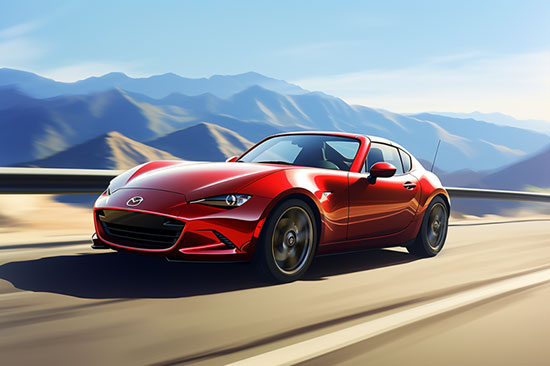
Going into the Mazda MX-5 RF, you’ll discover a sports car that excels in marrying affordability with an enviable power-to-weight ratio.
This iteration of the beloved Mazda MX-5 Miata doesn’t just promise the wind-in-your-hair freedom that the model is known for; it also delivers performance that punches above its weight class.
With 135kW and 205Nm from its finely-tuned engine, the lightweight 1055kg frame translates to a sprightly 127.96 kW/tonne.
Priced at $41,400, it stands out as an affordable sports car that doesn’t skim on thrills.
The absence of a turbo engine is hardly noticeable when you’re shifting through the gears of the precise six-speed manual transmission, each rev matching your rising excitement.
The MX-5 RF is a testament to the joy of driving, offering a power-to-weight value that’s hard to overlook.
Kia Cerato GT Highlights
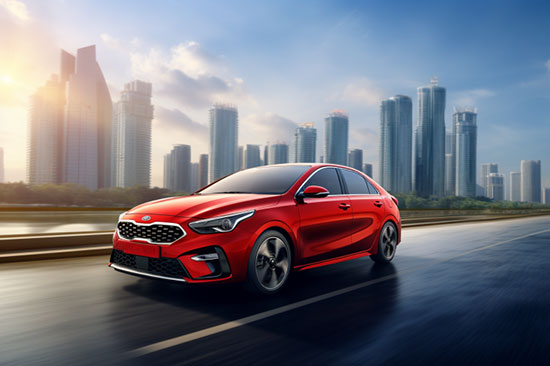
Turning your attention to the Kia Cerato GT, you’ll find its turbocharged engine specs are a primary force behind its exceptional power-to-weight ratio.
Its sporty design features aren’t just for show; they complement the GT performance metrics, marrying aesthetics with functionality.
Let’s explore how this sedan stands as a testament to affordable performance, offering you the thrill of a sports car without the hefty price tag.
Turbocharged Engine Specs
Exploring the turbocharged engine specs of the Kia Cerato GT, you’ll find its 150kW output and 265Nm of torque deliver an exhilarating drive without breaking the bank. This potent power is courtesy of a turbocharged four-cylinder engine that ensures a punchy performance every time you hit the pedal.
Kia Cerato GT Power-to-Weight Highlights:
- Power-to-weight ratio: 109.49 kW/tonne
- Weight: 1370kg
- Price to power-to-weight ratio: $35,290 per kW/tonne
Unlike a turbocharged 2.8-liter V6 engine, the Cerato GT’s smaller displacement offers efficiency with its horsepower. The numbers don’t lie; you’re getting one of the best power-to-weight ratios in an affordable package.
Analyzing these turbocharged engine specs, it’s clear the Cerato GT punches above its weight class in terms of performance and value.
Sporty Design Features
While you’re impressed by the Kia Cerato GT’s remarkable power-to-weight ratio, you’ll also be drawn to its array of sporty design features that amplify its road presence. The Cerato GT isn’t just about high performance from its 150kW engine; it’s about turning heads too. Let’s break down the visual flair that sets it apart from your average sedan:
| Feature | Description |
|---|---|
| Aggressive Grille | Bold mesh pattern with GT badging |
| Aerodynamic Lines | Sculpted bodywork for both style and efficiency |
| Sporty Alloys | 18-inch wheels that complement its athletic stance |
| Dual Exhaust | Chrome tips that hint at the power beneath the hood |
| Red Accents | Subtle touches that signify its sports car heritage |
These sporty design features don’t just add to the car’s aesthetic; they’re integral to the Cerato GT’s character, merging performance with panache in a package that’s tough to beat in its class.
GT Performance Metrics
You’ll find that the Kia Cerato GT sedan’s GT performance metrics, with a power output of 150kW and 265Nm of torque, leverage its 1370kg weight to deliver a driving experience that punches above its weight class.
- GT Performance Metrics
- Kia Cerato GT
- Power-to-weight ratio: Exceptional for the category
- Top speed: Competes with pricier models
- Comparative Muscle
- Mustang GT: A V8 engine producing far more power, but at a higher cost
- Dodge Charger R/T: Known for raw performance, yet less efficient
- Balanced Contenders
- Chevrolet Camaro LS: Similar ethos but the Cerato GT’s power-to-weight ratio translates into nimble handling and cost-effective thrills
Analyzing these metrics, it’s clear the Cerato GT offers a blend of speed and agility that rivals more expensive cars like the Mustang GT, Dodge Charger R/T, and Chevrolet Camaro LS.
Toyota GR Yaris Features
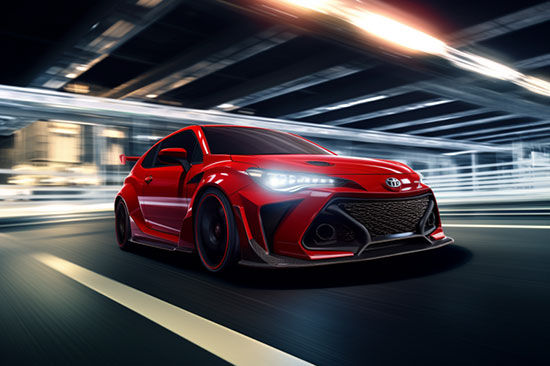
You’ll find the heart of the Toyota GR Yaris in its turbocharged engine, which churns out a hefty 200kW, providing a thrilling drive that’s hard to match in its price range.
It’s not just raw power though; the GR-FOUR all-wheel-drive system gives you precise control, ensuring power is delivered where it’s needed most.
And with rally-bred design elements, this car doesn’t just perform like a champion – it looks the part, too.
Turbocharged Engine Specs
Although the Toyota GR Yaris might appear compact, its turbocharged engine punches above its weight, delivering a thrilling 200kW of power and 370Nm of torque to enhance your driving experience. This pocket-sized powerhouse is a testament to Toyota’s commitment to building powerful cars with exceptional power-to-weight ratios.
Let’s break down what makes the GR Yaris a standout:
Turbocharged Engine Specs:
- Horsepower: 268 hp (200 kW)
- Torque: 273 lb-ft (370 Nm)
Weight and Performance:
- Curb Weight: 1290 kg
- Power to Weight Ratio: 155.04 kW/tonne
Drive Configuration:
- Drivetrain: All-wheel drive for enhanced grip and control
In a market filled with choices, the GR Yaris sets itself apart by offering a high-adrenaline drive at a price that won’t leave your wallet empty.
GR-FOUR AWD System
Exploring the GR-FOUR AWD System, you’ll find it’s a cornerstone of the Toyota GR Yaris’s agility and performance, distributing power effectively to all four wheels. When you pit the Yaris against the likes of the Subaru WRX or the Dodge Charger SRT, the GR-FOUR’s precision stands out. It’s not just about raw power, as seen in the Ford Mustang or Chevrolet Corvette, but how that power is harnessed.
| Vehicle | Power Distribution System | Notable Feature |
|---|---|---|
| Toyota GR Yaris | GR-FOUR AWD System | Customizable power split |
| Subaru WRX | Symmetrical AWD | Rally-bred heritage |
| Dodge Charger SRT | RWD with AWD option | Massive Hemi engines |
While the Camaro SS and Dodge Viper boast impressive power, the GR Yaris’s AWD system ensures a dynamic and controlled driving experience, truly making every kilowatt count.
Rally-Bred Design Elements
The Toyota GR Yaris’s rally-bred design elements, including its lightweight body and aerodynamic shape, contribute significantly to its impressive power-to-weight ratio. Here’s how it stands out:
Lightweight Frame:
- At just 1290kg, it trumps the heftier Ford Fiesta, including the Fiesta ST and Focus ST models.
- This weight advantage amplifies the driving experience, making it nimbler than competitors like the Mini Cooper S.
Aerodynamics:
- The shape reduces drag, enhancing efficiency and speed.
- These features aren’t just for show; they’re functional, contributing to the Yaris’s hot hatch status.
Power Output:
- With 200kW and 370Nm, it delivers raw energy that’s rare in this price bracket.
- It outpaces the conventional Ford Fiesta in terms of sheer muscle.
This synthesis of design and power defines the Toyota GR Yaris as a standout in its segment.
Nissan 370Z Performance

Why should you consider the Nissan 370Z when searching for an affordable car with a high power-to-weight ratio? This vehicle isn’t just about its impressive numbers; it’s about the experience behind the wheel. The 370Z’s performance is anchored by a V6 engine producing a solid 245kW. This power output, combined with the car’s weight, results in exhilarating acceleration and a top speed that’ll get your heart racing.
Here’s a quick glance at what makes the Nissan 370Z a standout:
| Aspect | Detail |
|---|---|
| Power Output | 245kW |
| Torque | 363Nm |
| Weight | 1467kg |
| 0-60 Miles/Hour | Under 5 seconds |
| Value Proposition | Best value power-to-weight ratio |
With its zippy miles per hour capabilities and a power-to-weight ratio that outclasses many rivals, the Nissan 370Z offers one of the best value propositions on the market.
Subaru WRX Advantages

You’ll find that the Subaru WRX takes the concept of an affordable power-to-weight ratio even further with its well-balanced performance attributes. This car proudly stands with a power output that certainly doesn’t skimp on excitement:
Subaru WRX Advantages
- Engine Output: The engine produces a staggering 197kW, propelling the WRX forward with enthusiastic vigor.
- Weight: At only 1447kg, this car manages to blend agility with solidity.
- Value: The price per horsepower ratio is compelling, making the WRX a sensible choice for the performance-minded.
Analyzing these facets will help you find a car that punches above its weight in terms of value and thrills, without leaving a gaping hole in your wallet.
Kia Picanto GT Analysis
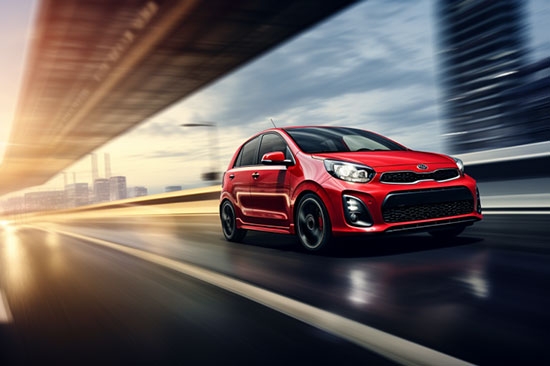
Switching gears to the Kia Picanto GT sedan, you’ll notice its power-to-weight ratio outshines many rivals in the affordable car segment. With a robust 150kW of power tucked under its hood, every kilowatt works diligently against its modest 1370kg frame, translating into a lively 109.49 kW/tonne.
This figure isn’t just impressive—it’s a statement that the Kia Picanto GT isn’t just the cheapest car on this list, but a true performance bargain. Priced at $35,290, it boasts a price tag that belies the exhilaration it offers per horsepower.
This Kia Picanto GT Analysis reinforces that you don’t need to break the bank for a zestful drive—scanning the price list, this car’s value proposition is as clear as day.
Hyundai I30 N Line Hatch
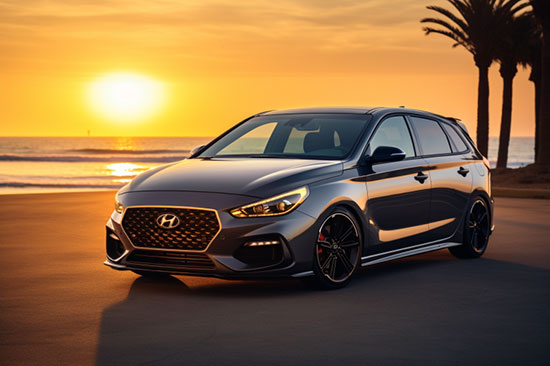
You’ll find the Hyundai I30 N Line Hatch strikes an impressive balance between power and affordability. Its performance specs don’t just turn heads; they promise a drive that’s as dynamic as it’s cost-effective.
Analyzing this model’s power-to-weight ratio reveals how it delivers strong acceleration and nimble handling without breaking the bank.
Performance Specs
How does the Hyundai i30 N Line Hatch’s power-to-weight ratio translate to its on-road performance? While not a Mustang or Camaro with a roaring 7-liter V8 engine pumping out 470 horsepower, the i30 makes the most of what it has. Its power to weight ratio ensures a lively response when you hit the gas, offering an experience that’s both engaging and accessible.
- Power to Weight Ratio:
- 109.49 kW/tonne: Quicker acceleration and nimble handling
- Outperforms many in its class
- Affordability meets spirited driving
The i30’s tech also impresses with the Uconnect operating system and an intuitive infotainment screen, making it a well-rounded package for those who value performance and tech without breaking the bank.
Cost Efficiency
As you consider the Hyundai i30 N Line Hatch’s value, its power-to-weight ratio translates into significant cost efficiency, with a modest outlay securing you a car that punches above its weight in performance.
At a price point that’s a fraction of what you’d pay for high-end sports cars, you’re getting a vehicle with a power-to-weight ratio that rivals many in the 100 per horsepower range.
This makes the Hyundai i30 N Line Hatch not just a smart choice, but also one of the best options in the used car market for enthusiasts on a budget.
Its retail price, starting at $21,650, is a testament to Hyundai’s commitment to offering performance that’s accessible without breaking the bank.
Ford Fiesta ST Benefits
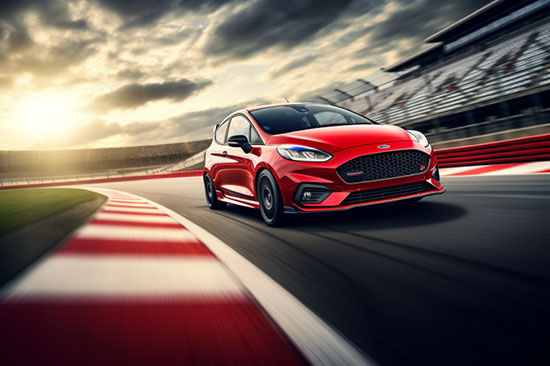
The Ford Fiesta ST’s high power-to-weight ratio grants you thrilling performance at an affordable price. This model is a beacon of value, especially when compared to its bigger brother, the Ford Focus. Here’s how you benefit from the Fiesta ST:
Thrilling Performance
- Nimble handling
- Quick acceleration
Affordability
- Lower retail price than many competitors
- Cost-effective maintenance
Value Retention
- Desirable in good condition on secondary markets
- Strong resale prospects
Analyzing the Ford Fiesta ST, you’ll find it stands out in the realm of budget-friendly speedsters. It’s not just about the initial purchase; you’re investing in a car that promises exciting drives and holds its value well over time.
Abarth 595 Competizione Review

You’ll find that the Abarth 595 Competizione, with its 132 kW/tonne power-to-weight ratio, offers similarly thrilling performance as the Ford Fiesta ST, yet stands out with its unique Italian flair. In this Abarth 595 Competizione review, you’ll see why this car on our list is the King of Cheap thrills.
Despite its modest price, the latest model year doesn’t skimp on excitement. It punches above its weight, figuratively and literally, making it one of the best cars you can buy when considering power to weight ratio.
With a snappy exhaust note and responsive handling, the Abarth 595 Competizione turns each drive into an event. It’s a testament to how an affordable car can deliver an experience usually reserved for higher-end sports cars.
Conclusion
You’ve seen the contenders, each boasting a power-to-weight ratio that punches above their price tag. From the agile Mazda MX-5 RF to the fiery Abarth 595 Competizione, these cars deliver thrills without draining your wallet.
They prove performance isn’t reserved for the premium market. Whether you’re carving corners or surging down straights, these affordable speedsters offer the exhilaration you crave.
Make no mistake, driving excitement is within your grasp. Choose your champion and hit the road running.
